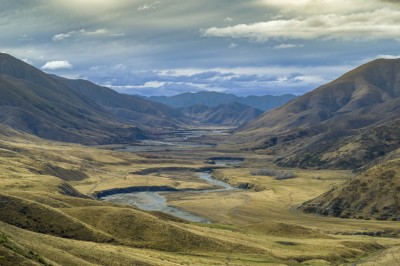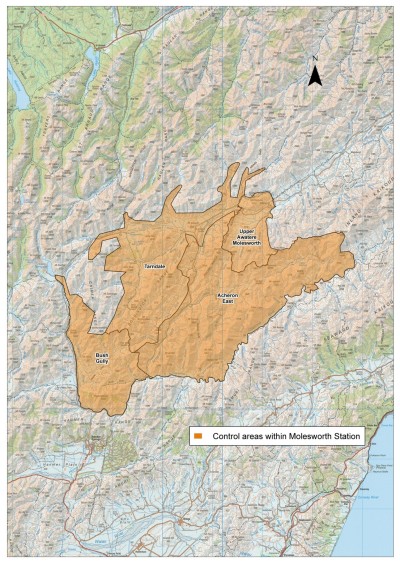Progress towards TB eradication on New Zealand’s largest station – Molesworth
The TBfree programme aims to eradicate bovine tuberculosis (TB) from New Zealand by 2055, with milestone targets of livestock TB freedom by 2026 and possum TB freedom by 2040.
 Molesworth Station is New Zealand’s largest working farm. It spans 180,787 hectares in the mountainous and scenic landscape of the South Island high country.
Molesworth Station is New Zealand’s largest working farm. It spans 180,787 hectares in the mountainous and scenic landscape of the South Island high country.
For 36 years, the station has been home to the longest-standing TB-infected herd. It has been a focal point for:
- a 9-year program involving targeted herd TB and wildlife surveillance
- farm and stock management
- possum control
- innovative research initiatives.
Given the long-standing TB presence in both the Molesworth cattle herd and wildlife, the programme has taken a comprehensive approach. This includes:
- ground-based pest control
- aerial 1080 operations targeting possums
- intensive on-farm herd testing
- carcass inspections at slaughter
- controls on animal movements off the farm.
OSPRI recently completed what we intend to be the final planned TBfree 1080 aerial operation at Molesworth Station. Since 2017, we've been carrying out an intensive TBfree aerial possum control program, supported by ground control operations in the Bush Gully, Tarndale, and Acheron East areas, working hard to eradicate TB at Molesworth Station.

The 2023 aerial operation in October represents a significant step forward, signalling the beginning of the end of Molesworth's battle with TB. The goal with this cycle of aerial operations was to rapidly reduce possum numbers and maintain them at a low level, aiming for the long-term benefit of eliminating TB not only in possums but also in other animals like deer, ferrets, and feral pigs.
The work completed in Yarra and Five-mile concludes our planned aerial operations for now. We'll monitor the success of the aerial operations in reducing possum numbers, and if successful, TBfree aerial operations will provisionally conclude at Molesworth. We'll continue ground-based activities, including trapping and monitoring possums, wildlife surveillance of pigs and ferrets, and ongoing herd testing.
Over the next 5 years we will monitor wildlife for any signs of TB, and livestock through annual testing and surveillance at slaughter. Providing we do not identify any new TB infection originating from wildlife, the 2023 aerial could be the final TBfree aerial in Molesworth’s journey.
The surrounding areas
Molesworth Station is not the only area that is at risk from TB infection, and the neighbouring areas also benefit from the work completed by the TBfree programme. Decades of hard work has been going on behind the scenes to overcome TB and we’re working with the local community to help eradicate the disease.
The video below provides a deeper dive into what’s been happening in the high country recently.

